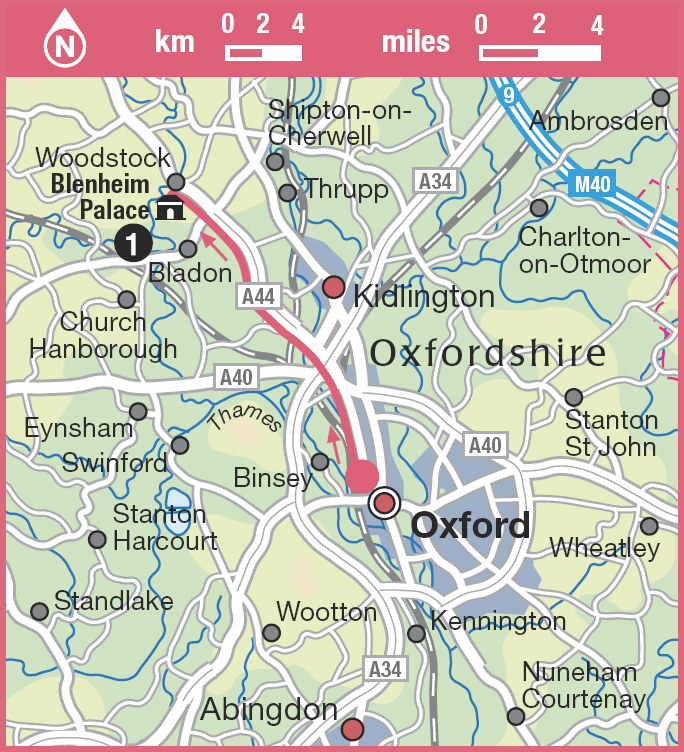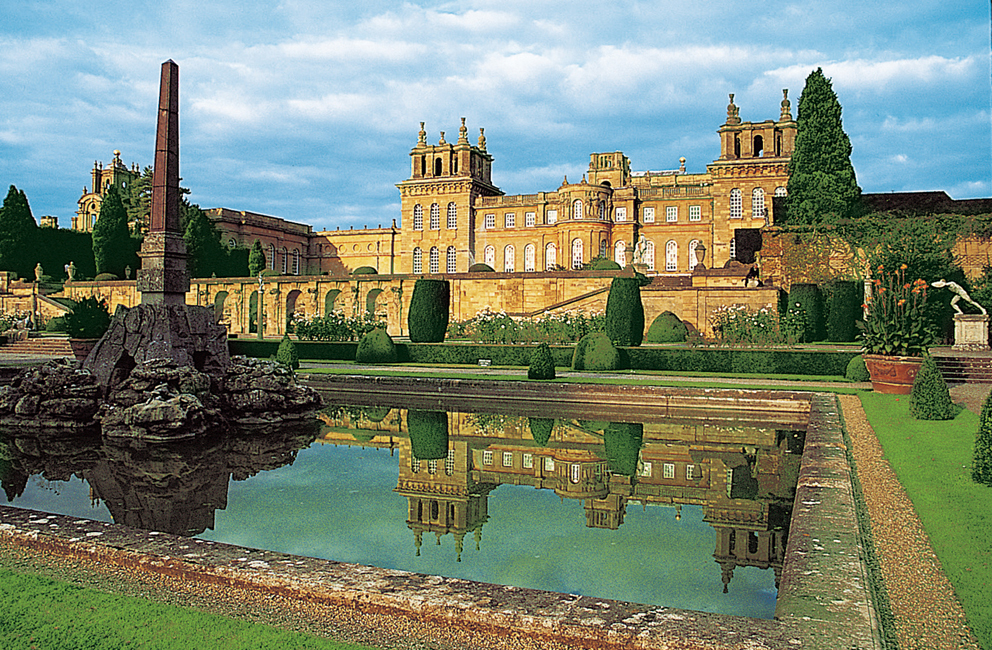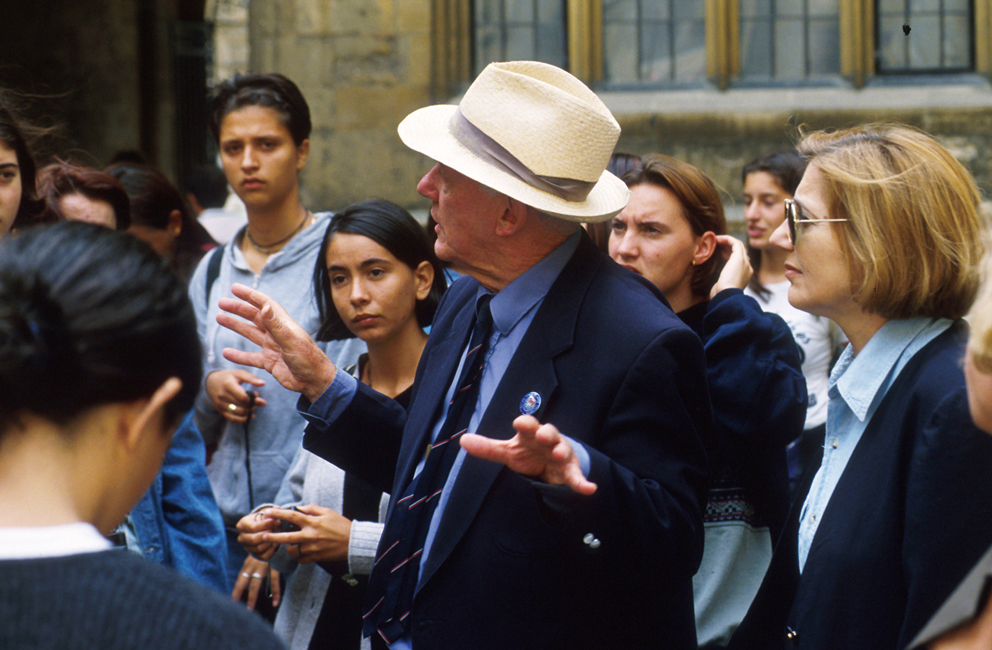
Tour 12 : Excursion to Woodstock
This full day’s excursion takes in the pretty Cotswold town of Woodstock as well as one of Britain’s very grandest stately homes, Blenheim Palace
Situated on the A44 eight miles (13km) northwest of Oxford, Woodstock is a small English country town with an attractive main street (Park Street) flanked by fine Georgian-fronted houses and a collection of pubs, cafés and boutiques. The simplest way to get there is to take the S3 bus (Stagecoach) from Gloucester Green Bus Station in central Oxford. Buses leave every half hour, seven days a week. Once there, this tour should take you a little over a mile (2km).
Town History
Woodstock has a colourful history, and there was a royal manor here as far back as records go, frequented by a succession of monarchs for deer hunting when the land was still part of the great forest of Wychwood. The place name actually means ‘the place in the woods’, though visitors might be lulled into thinking that it derives from the five-holed wooden stocks on view outside the Oxfordshire Museum in Park Street.
Henry II installed his mistress, ‘Fair’ Rosamund Clifford, at Woodstock, until, so the legend goes, Queen Eleanor discovered her hunting lodge hideaway and had her murdered. Edward, the Black Prince, hero of the Hundred Years’ War, was born here in 1330. And in 1554, the future Elizabeth I was imprisoned in the manor by her elder sister, Mary Tudor, for refusing to embrace Catholicism as the one true faith.
Woodstock derived much of its former prosperity, however, from glove-making. While all the factories in Woodstock itself are now closed, gloves are still made in surrounding villages and sold at the Woodstock Glove Shop to the side of the Town Hall.
Oxfordshire Museum
The Oxfordshire Museum (tel: 01993 811 456; www.tomocc.org.uk; Tue–Sat 10am–5pm, Sun 2–5pm; free) is housed in Fletcher’s House on Park Street, and is well worth a visit, providing a fascinating overview of the history of Oxfordshire from the earliest times to the present day. The museum includes galleries for the displays on archaeology, agriculture and domestic life, complete with hands-on and interactive features for children. There are also temporary exhibitions, and at the back is a pleasant garden with exhibitions of contemporary sculpture.
Opposite the museum, the Church of St Mary Magdalene was lavishly restored in 1878, but the best part is the 18th-century tower, carved with swags of flowers around the clock and parapet.
Blenheim Palace
Delightful though it is, Woodstock is somewhat overshadowed by its neighbour, the enormous Blenheim Palace 1 [map] (tel: 01993 810 500; www.blenheimpalace.com; house & gardens: mid-Feb–Oct daily, Nov–mid-Dec Wed–Sun, 10.30am–5.30pm; park, all year daily, 9am–6pm or dusk; charge). Reached either on foot through the archway at the end of Park Street, or by car through the gates at the entrance to the town, this giant among English country houses lies at the heart of a vast estate covering no less than 2,700 acres (1,100 hectares).
It was built at the behest of Queen Anne for John Churchill, First Duke of Marlborough and forefather of Winston Churchill, in recognition of his great victory over the French at the Battle of Blenheim in 1704. It occupies the site of Woodstock’s old Royal Manor, demolished after the Civil War. Designed by Sir John Vanbrugh and his assistant Nicholas Hawksmoor, Blen-heim is recognised as a masterpiece of the English Baroque style, although its ostentatious features, and almost ruthless imposition on the English landscape, made it the subject of controversy from the moment it was completed.
Blenheim excites the imagination and invites superlatives. The skyline, with its bizarre chimneys, its pinnacles resembling stacks of cannon balls, and its ducal coronets, creates a wonderful silhouette when viewed across the lakes and avenues of the park, which was landscaped by ‘Capability’ Brown.
Sir Winston Churchill
Churchill was born on 30 November 1874 in a simple room to the west of Blenheim’s Great Hall. Once used by the First Duke’s domestic chaplain, Dean Jones, the room now displays many of Sir Winston’s personal belongings. It was at Blenheim that Churchill proposed to his future wife, Clementine, in the Temple of Diana. The house also acted as inspiration for several of his paintings, some now on show.
State Rooms
The attractions of the interior include the magnificent gilded State Rooms – adorned with an impressive array of tapestries, paintings, sculpture and fine furniture – and the beautiful Long Library, which contains some 10,000 volumes as well as a Willis organ. It is easy to forget, considering the scale of the palace, that it was actually built as a home. Sir Winston Churchill was born here in 1874, and his room provides the core of an exhibition of Churchilliana, including manuscripts, paintings, books, photographs and letters. Unlike the First Duke of Marlborough, who is commemorated by a large monument in the palace chapel, Sir Winston is buried in a simple grave in the parish church of Bladon, on the southern periphery of the estate.

The palace is surrounded by acres of superbly landscaped grounds.
APA Glyn Genin
Outdoor attractions
Many visitors to Blenheim, however, never actually go inside the palace, preferring instead to explore the attractions of its enormous park. This includes as its centrepiece Blenheim Lake, which is spanned by Vanbrugh’s Grand Bridge. The shallow side, known as the Queen Pool, is well worth strolling around; home to a large variety of water fowl, it is a popular place for birdwatchers. Visitors can also hire rowing boats, and coarse fishing is possible (except mid-March to mid-June).
A further outdoor attraction is the Marlborough Maze, the world’s largest symbolic hedge maze and an absolute must for visitors. It occupies the Walled Garden at the southern side of the estate, together with putting greens, games of giant chess and draughts, and bouncy castles. This forms part of the Pleasure Gardens complex, which also includes a herb and lavender garden, butterfly house, cafeteria and adventure play area.
A miniature railway trundles across the parkland between the palace and the pleasure gardens. The alternative is to walk, admiring on the way the magnificent gnarled oak trees, many of which bear an almost uncanny resemblance to the ‘Ents’ in Tolkien’s The Lord of the Rings.
Eating Out
The Bear Hotel
Park Street, Woodstock; tel: 0844 879 9143; www.macdonaldhotels.co.uk; daily breakfast, lunch and dinner. This romantic 13th-century coaching inn, part of the high-class Macdonald stable of hotels, has an excellent restaurant that serves modern European cooking using the highest quality organic produce. There is also the relaxing Churchill Lounge for snacks and coffee. £££
The Feathers
Market Street, Woodstock; tel: 01993 812 291; www.feathers.co.uk; daily lunch and dinner.
The Feathers hotel has won awards for its food, which is modern European in style and cooked with flair. Sunday lunch in the 17th-century panelled dining room is a grand affair, though there is also a more informal bistro for lighter meals. £££
The Water Terrace Café
Blenheim Palace; tel: 01993 810 519; daily 10am–5.30pm.
This self-service café within the Palace offers light lunches, snacks and afternoon teas. Sit inside or out and enjoy the view over the Water Terraces. £
The Woodstock Arms
8 Market Street, Woodstock; tel: 01993 811 251; www.woodstockarms.co.uk; daily noon–11pm, food served until 9pm, Sun noon–5pm.
Old-fashioned pub in the middle of town serving comforting traditional dishes such as sausage and mash and sticky toffee pudding. Outdoor seating in the summer. ££

‘Blue Button’ guides are noted for their expertise.
APA Glyn Genin